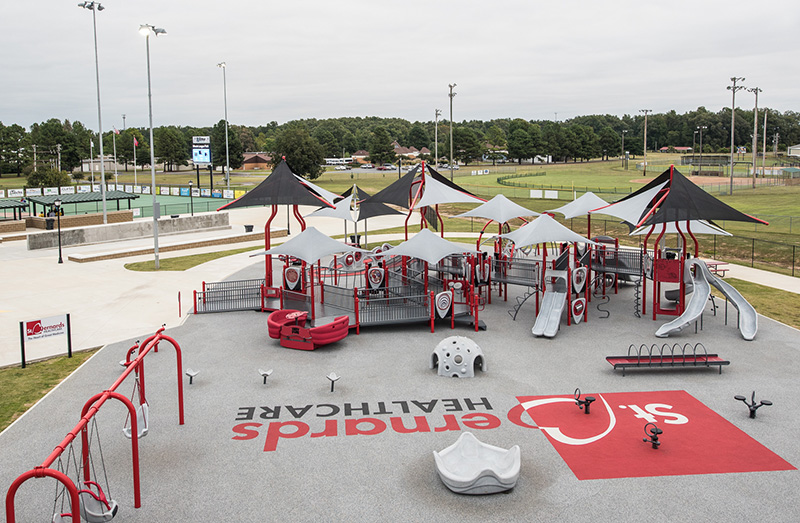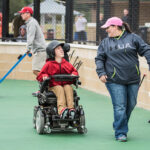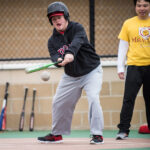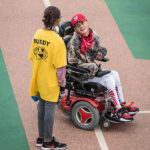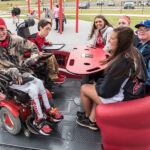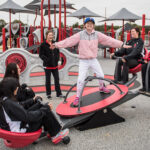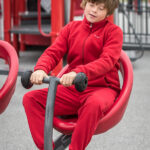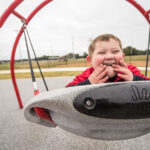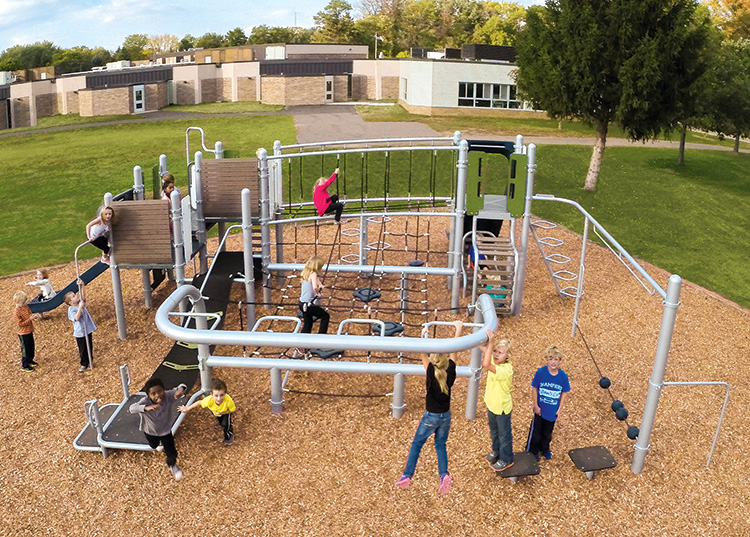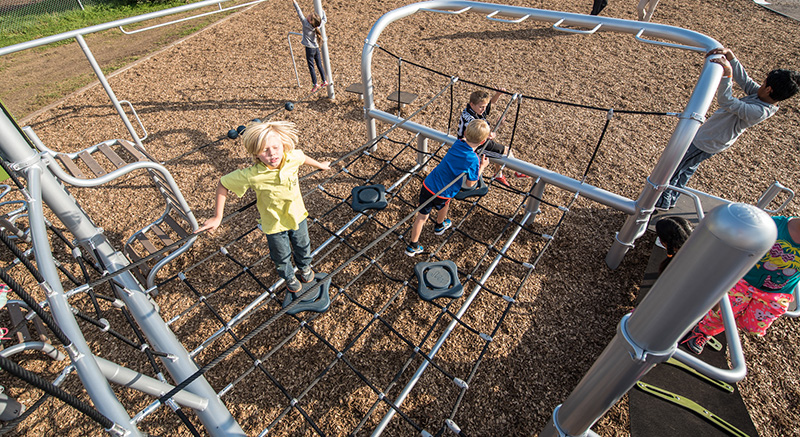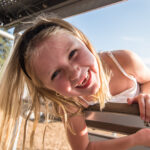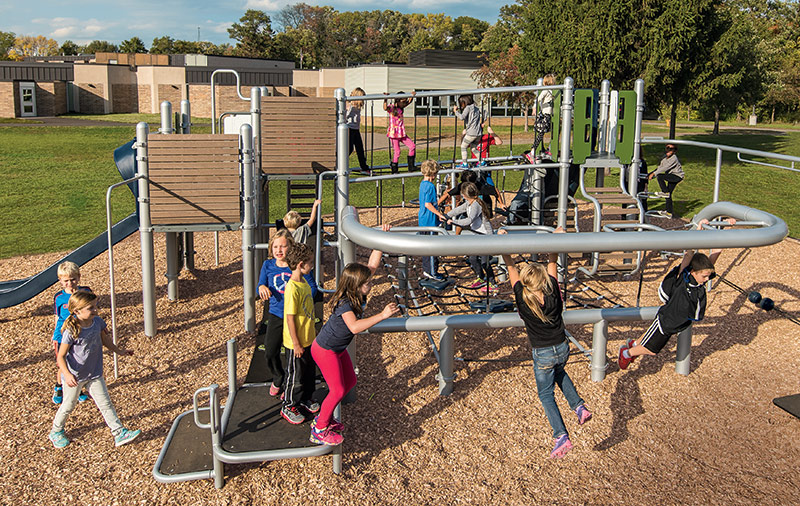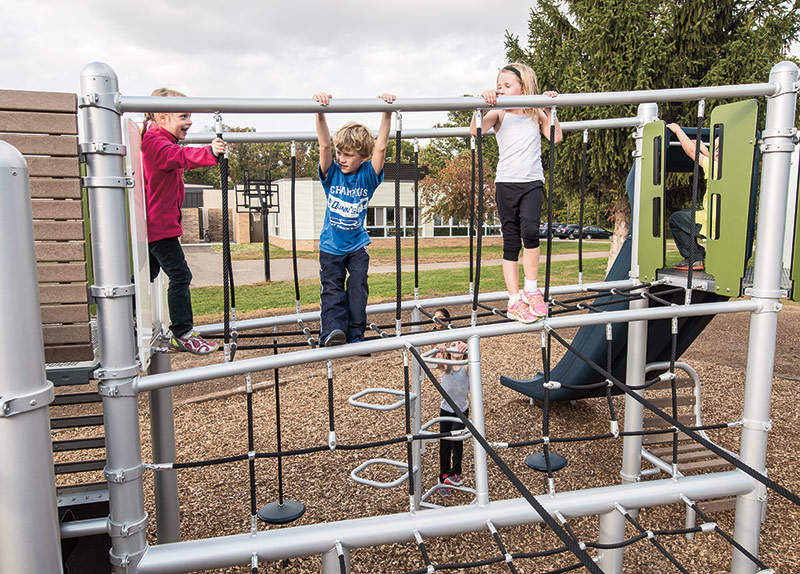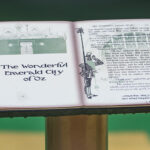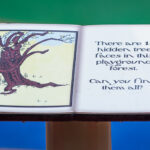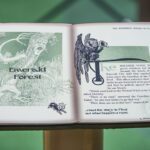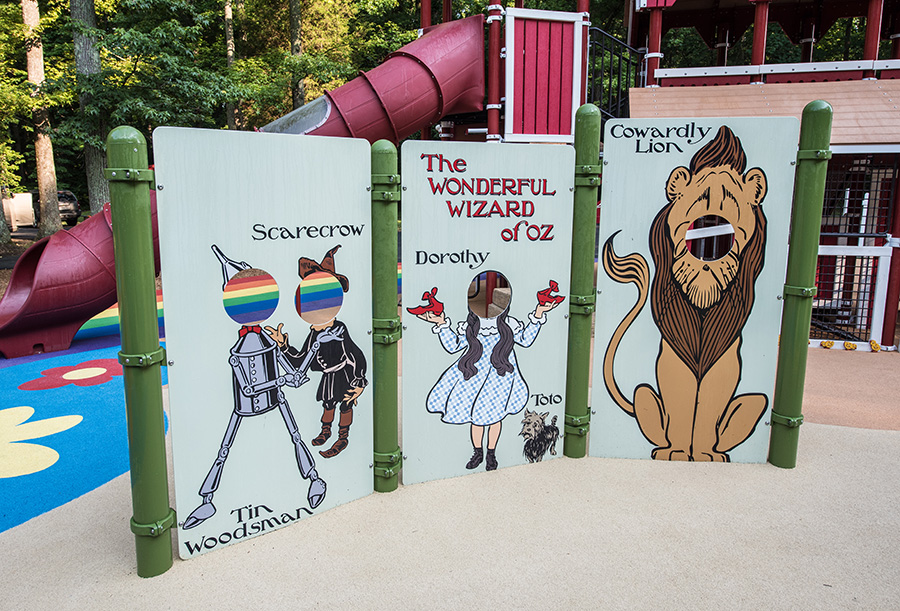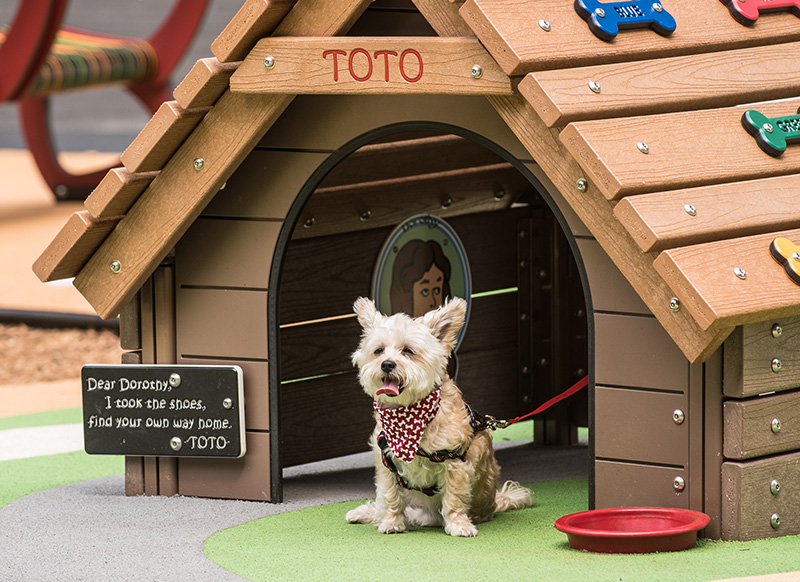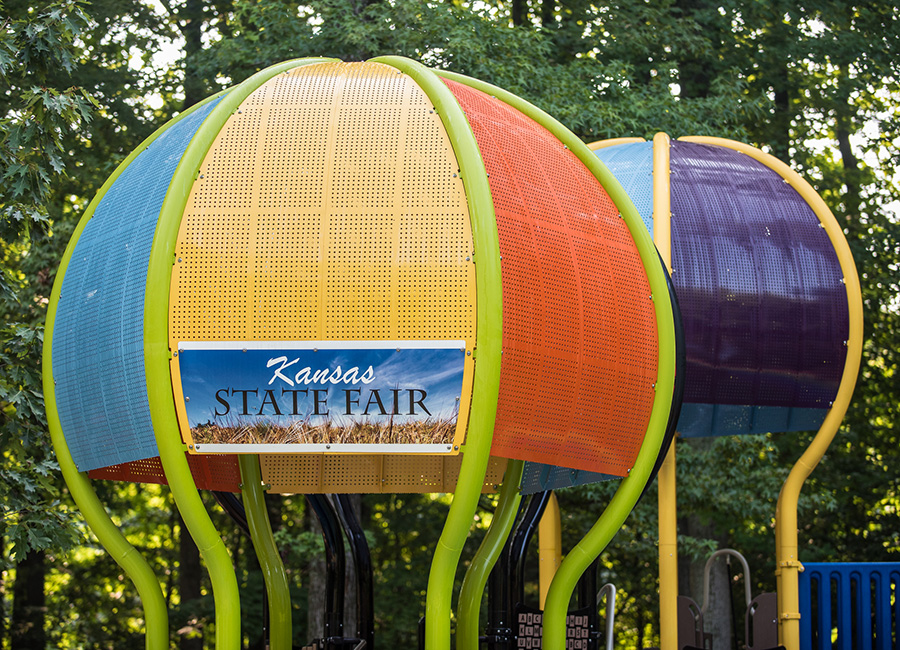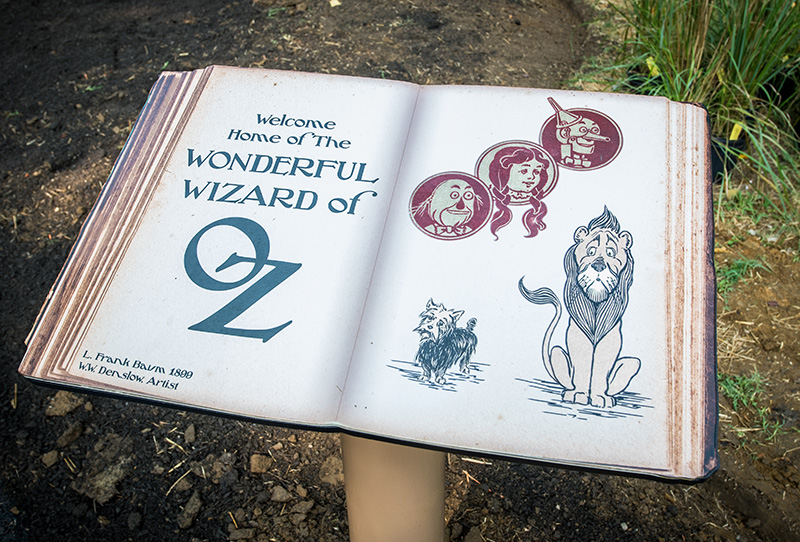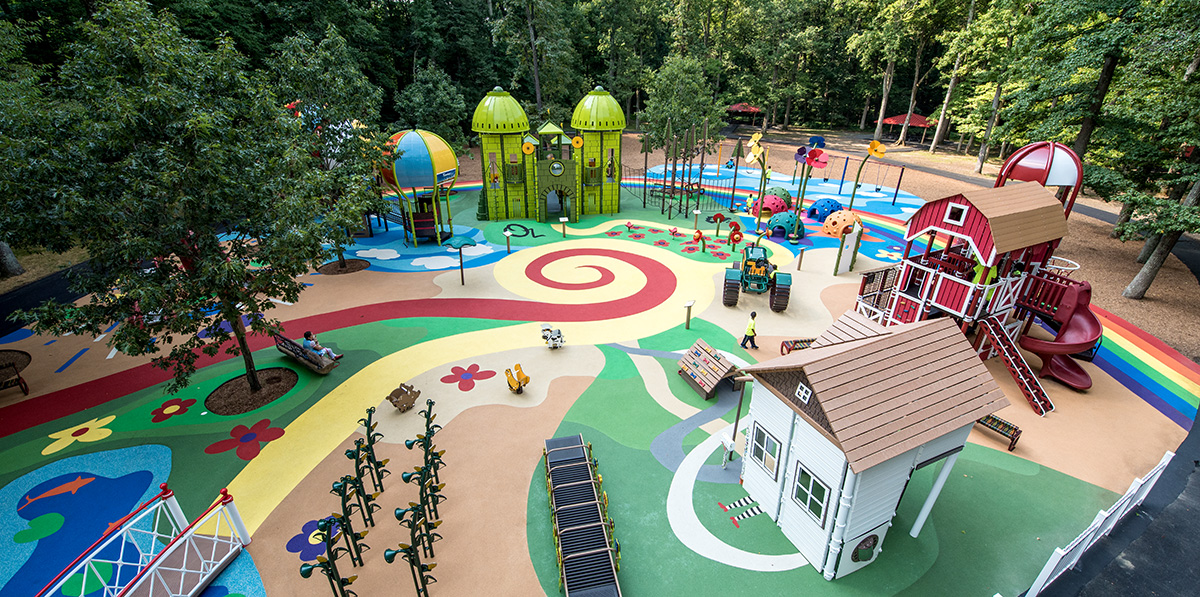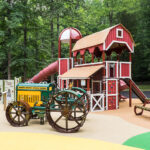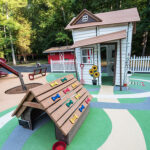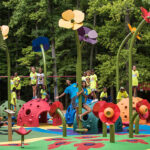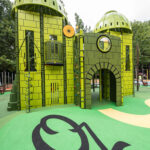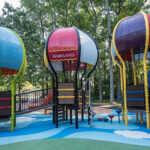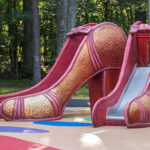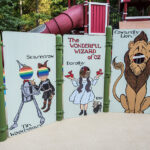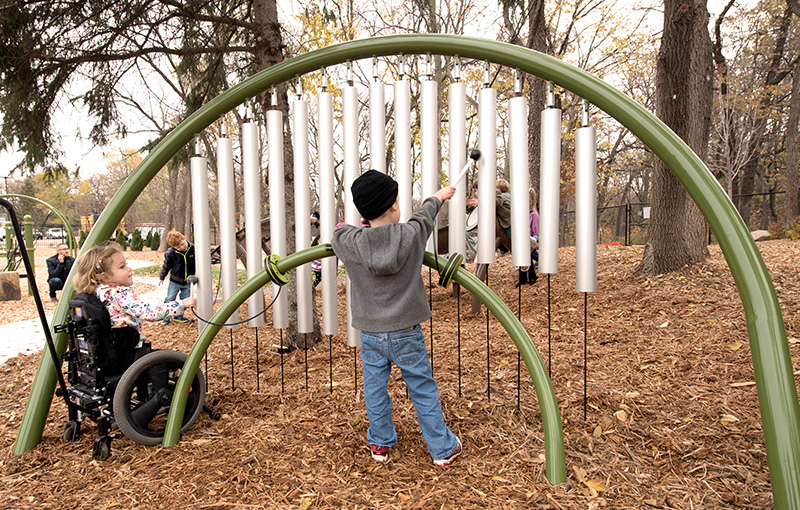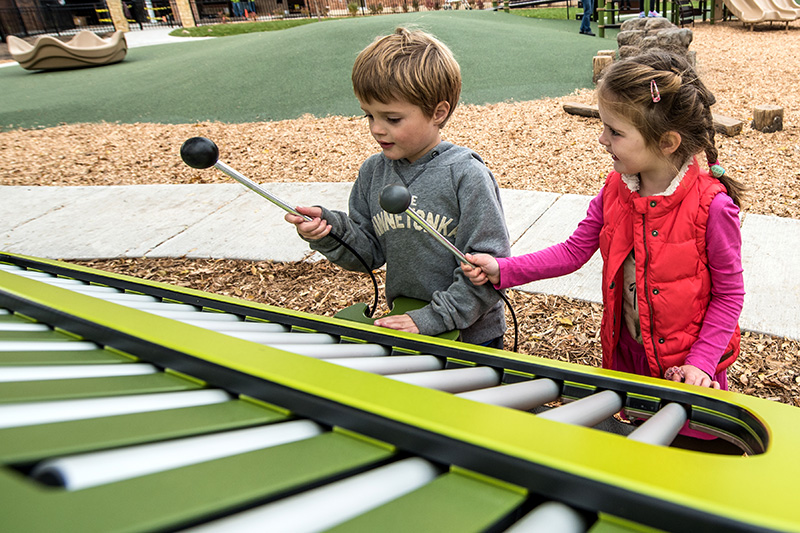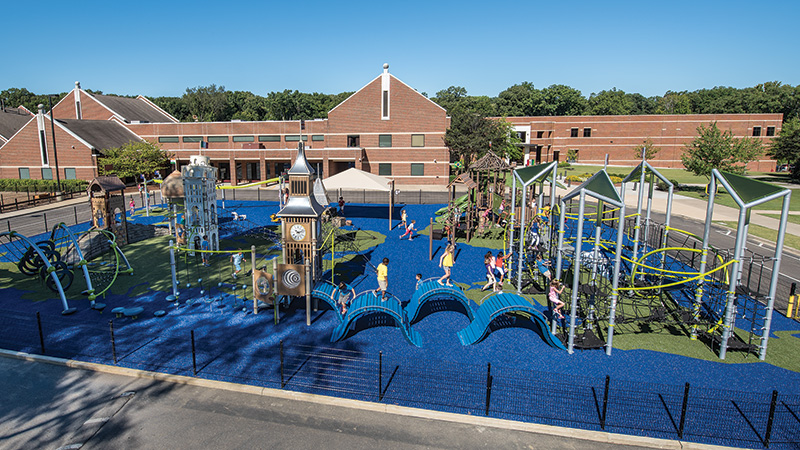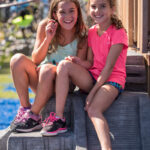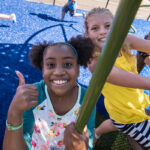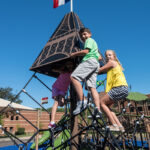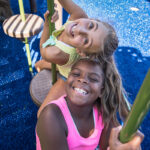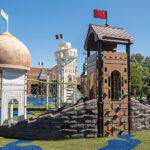In September, our local playground consultant, Carolina Parks & Play, helped open Savannah’s Playground in Myrtle Beach, S.C. Ingrid M. Kanics, member of Landscape Structures Inclusive Play Advisory Board, was able to attend the grand opening, and today, as our guest blogger, she shares her experience of the event and takes us through the inclusive playground design.
Labor Day typically marks the end of summer, but this year in Myrtle Beach, it marked the beginning of something amazing. Hundreds of people gathered to be part of the official opening of Savannah’s Playground. This inclusive playground, located in the Myrtle Beach Grand Park, takes playing to a whole new level.
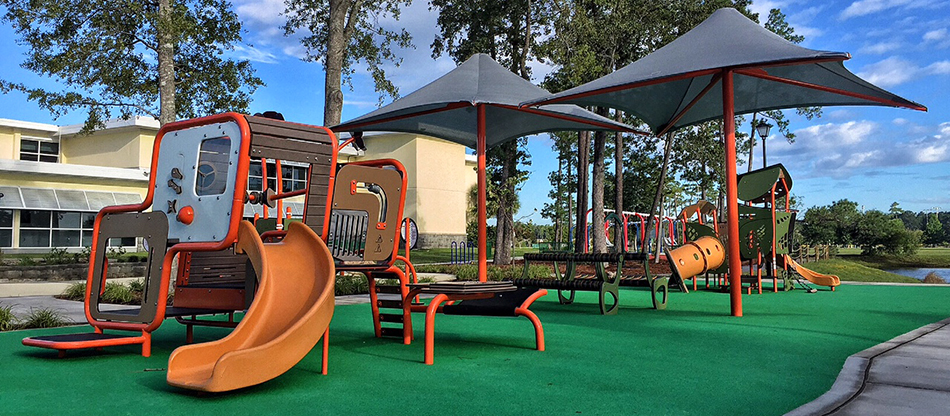
The playground itself provides visitors of all ages and abilities with activities that will keep them busy for hours. For the early learners, there is a whole area of assorted structures that will provide them with a whole mix of climbing and sliding activities where they can build their muscles as well as social and cognitive skills. This playground area includes ample seating and shade to support families with young children.

Oodle® Swing
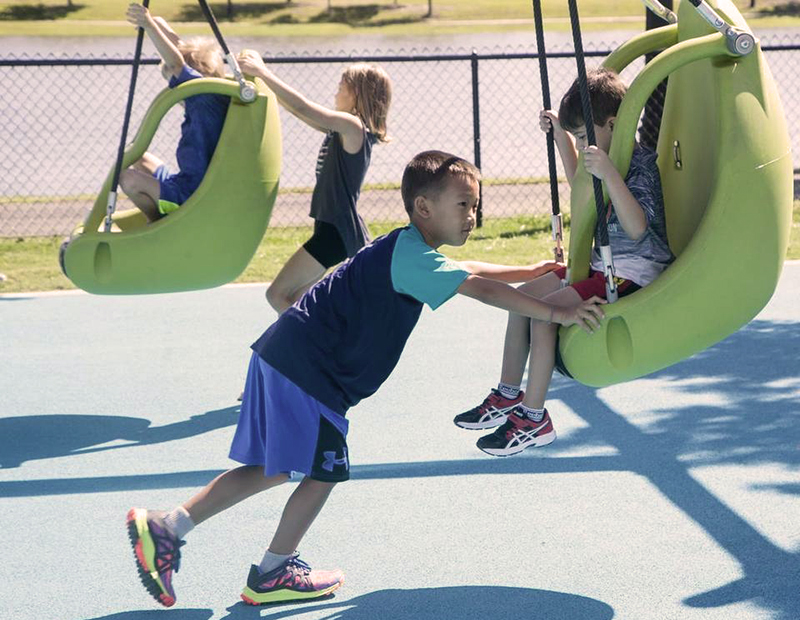
Molded Bucket Seat with Harness
Families will also find a huge collection of swings of assorted types. The collection allows children of all abilities the opportunity to experience this favorite childhood activity. The sheer number of swings ensures that wait times to get on a swing will be minimal compared to the regular playground experience. Group swings like the Oodle® Swing provide children with the chance to swing together with their friends.
Nestled in a group of trees a bit off the beaten path is the Sensory Play Center®. Various activity panels encourage children to play with their sense of touch, sight and hearing. The curves within the wall create small nodes of play that support group play for two or three children at a time. This results in a quieter play area, which will support children with autism.
Just down from the Sensory Play Center is Pulse® Table Tennis, an interactive and multisensory game. The lights and sounds attract children of all abilities to try their hand at electronic table tennis. As children play together, the game challenges their motor coordination, reflexes and reasoning as they try to out play their opponent. The quicker children play, the quicker the game becomes, thus challenging even the best athletes who come to the playground.
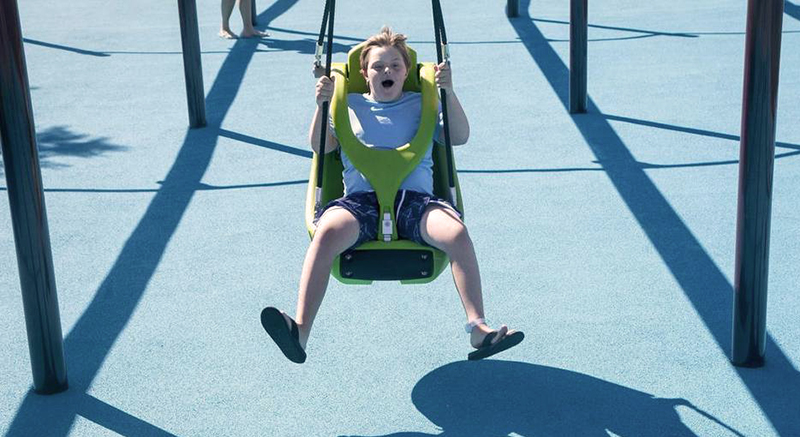
ZipKrooz®
Even more, a triple ZipKrooz® with assorted seating options ensures that children of all abilities are able to fly down the track to their friends on the other end. Individuals of all ages and abilities will enjoy flying through space!
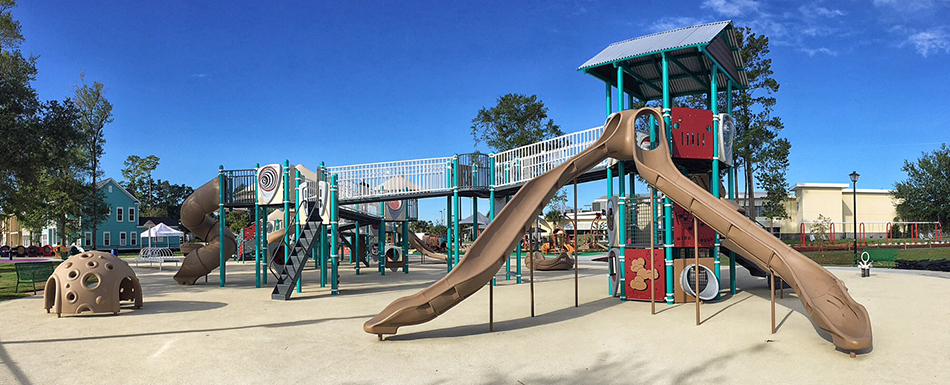
PlayBooster® playstructure

Sway Fun® Glider
Once visitors have sampled all of the surrounding play spaces, they can dive into playing on the main playground structure. This huge ramped playstructure delivers a route of play that takes them 12 feet off the ground. Along the way to the top, there are a wide variety of play panels to explore, which will occupy their mind in play to build reasoning and problem-solving skills by engaging their senses. Kids can take a pit stop at the Sway Fun® glider, or leave the structure through the abundance of playground slides found at assorted levels on the playstructure. Plus, a variety of climbers that help build motor coordination and muscle strength are positioned throughout the playground so kids can quickly get back up to the fun. Set around this playground are inclusive playground components–the We-saw™, OmniSpin® Spinner, Roller Table and TopsyTurny® Spinner–that promote group play. Children and their friends can experience motion in fun and different ways!
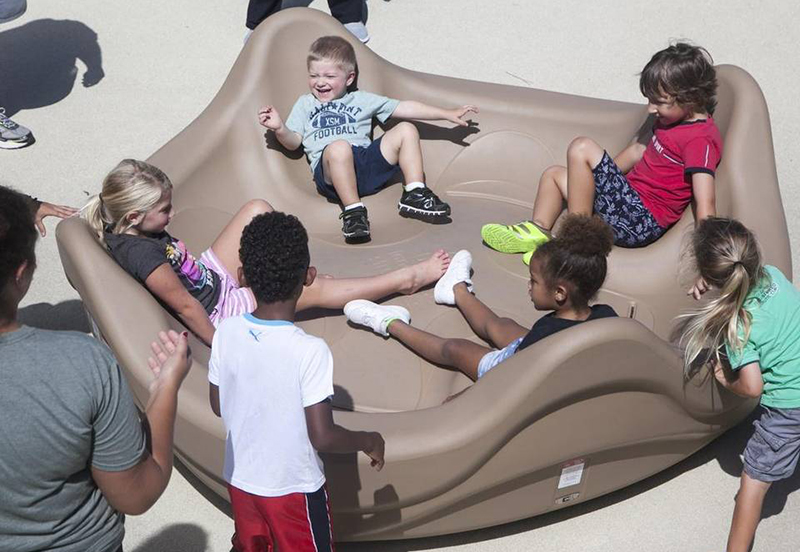
OmniSpin® Spinner
To say the least, Savannah’s Playground provided hundreds of kids with a great place to play on this Labor Day weekend morning. Every child will find their “just right” fit on this playground as it is designed to support their physical, sensory and cognitive needs while delivering a world of fun. It allows each visitor to build their socialization skills and self-esteem as they walk, run, roll, slide, climb, swing and spin together at Savannah’s Playground!

